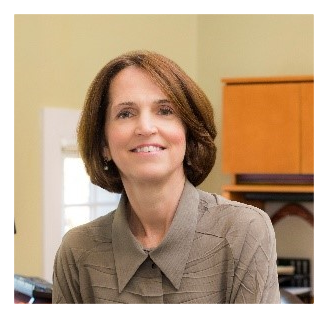Katie Smith Sloan
President and CEO, LeadingAge
In May, the White House Office for Management and Budget (OMB) published a request for comment on potential changes to how the federal government measures poverty. On June 20, LeadingAge, along with other aging advocates, commented on the serious impacts these potential changes would have on older adults and on aging services.
 In short, if the federal government were to proceed on certain proposals discussed in the request for comment, fewer older adults would be eligible for publicly-funded aging services over time and, consequently, aging services providers would be unable to serve huge numbers of low-income older adults who very much need such supports.
In short, if the federal government were to proceed on certain proposals discussed in the request for comment, fewer older adults would be eligible for publicly-funded aging services over time and, consequently, aging services providers would be unable to serve huge numbers of low-income older adults who very much need such supports.
Frankly, I’ve had enough. Since being introduced to the field of aging services early in my career while working on Capitol Hill in Sen. Thomas Eagleton’s office, I’ve heard far too many stories about older adults facing unconscionable choices about basic human needs. No one should have to choose between paying for vitally needed prescription medicine or their rent; having nutritious food or shoes on their feet. As a nation, we can – and must – do better.
Each year, the U.S. Census Bureau establishes the poverty threshold, or the income level under which individuals and families are considered to be living in poverty. In 2018, the poverty threshold for a single adult age 65+ was $13,064.
The poverty threshold is used to determine the federal poverty level (FPL), which is then used to determine eligibility for a wide range of programs important to older adults and aging services providers, including Medicaid long-term services and supports (LTSS), nutrition benefits, Medicare subsidies and more. In short, these services are a lifeline for people who can’t otherwise afford the basic necessities they need to live, let alone thrive.
The U.S. Census Bureau increases the poverty threshold each year to keep pace with inflation. Historically, it has used the consumer price index for urban consumers (CPI-U; colloquially known as the “consumer price index”) to do so. In the request for comment, OMB lists other potential inflation measures that could be used instead of the consumer price index, including an alternative “chained” CPI-U.
If the federal government were to adopt this chained CPI-U as the inflation factor for increasing the poverty threshold, the immediate impact would be fewer people considered to be living in poverty compared to continued use of the current methodology. And over time, ever fewer people – including older adults – would have access to vital services that use the FPL as the determinative eligibility criterion.
Changes to the poverty threshold calculation would have specific and negative implications for access to LTSS and other aging services. According to the Medicaid and CHIP Payment and Access Commission, every state uses the FPL to determine eligibility for Medicaid LTSS both in nursing homes and in home and community-based settings. While states use varying percentages of the federal FPL as eligibility criteria for certain state programs, there is consistent use nationally of FPL as the financial eligibility determinant for Medicaid LTSS. The proposed changes in calculating the poverty threshold would establish a downward spiral over time in the numbers of older adults who would otherwise have met the eligibility standard.
To sum it up: Older adults with low incomes would be at even greater risk without access to the LTSS they need, and aging services providers of all types, including nursing homes, home-based care providers, adult day services centers, PACE organizations and more, would be restricted to serving fewer people through Medicaid.
Why does this news keep me up at night? Because 10,000 people are turning 65 every day and will continue at that pace until 2030. In other words, 40 million people 65 and older in the U.S. by 2030.
I often think about the implications of these numbers as we assess the impact on programs that support older adults, particularly those without the resources to meet their health and wellness needs. This reality is sobering as we know that slightly more than half of people over the age of 65 will at some point need help with everyday activities, which aren’t covered by Medicare.
To further complicate matters, there is a dire shortage of affordable housing with services for seniors. Waiting lists are already years-long in many places and homelessness among this population is growing exponentially. Older adults pay a small percentage of their income to have access to an affordable apartment, but when one’s income is $13,064 or less, every dollar counts.
Adjusting the poverty threshold means less money in older adults’ pockets and the imposition of more unconscionable choices. And that just isn’t okay. Let’s support regulations that lift people up, not keep them down.
Katie Smith Sloan is president and CEO of LeadingAge, a national organization of 6,000-plus members and partners that include not-for-profit organizations representing the entire field of aging services, 38 state partners, hundreds of businesses, consumer groups, foundations and research partners. LeadingAge is also a part of the Global Ageing Network (formerly IAHSA), which spans 30 countries across the globe.
